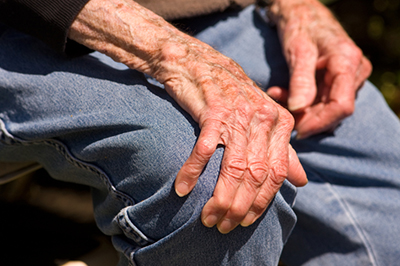
Source: www.healthyalberta.com
Parkinson’s disease (PD) is a chronic and progressive disorder that affects the body’s movement over a prolonged course of time. It advances slowly and generally takes about a decade or two before patients become resistant to most forms of available medications.
Touted as one of the most common neurological diseases of our time, it affects individuals older than 60 years of age. Although it tends to afflict the graying population, younger patients are not spared. The fundamental problem of PD is the degeneration of ‘dopamine-generating cells’ that function as a factory in manufacturing chemicals vital for the body’s movement. Think of dopamine as “motor-juice” for the body, much like that of petrol for a car. Without it, movement is difficult and near-impossible.
What are the symptoms?
There are two distinct subtypes of PD – ‘tremor-predominant’ and ‘akinetic-rigidity predominant’ – depending on the most dominant symptoms. This classification is important in clinical terms to guide the physician’s focus on the subsequent treatment.
Patients with tremor-predominant PD have noticeable involuntary movements of their hands and even feet. The classical tremor that presents in a patient with PD is resting in nature; voluntary movements allay the tremors. It is better known as a ‘pill-rolling’ tremor from the way it appears.

Figure 1: A) Pill rolling tremor B) Stooped posture with shuffling, hesitant gait
Patients with the other variant of PD, akinetic-rigidity, would manifest with an extreme degree of slowness in their movements which often presents with significant rigidity. This affects locomotion to a degree that it is no longer fluid. Sufferers point out that this degree of stiffness and slowing down of movement is akin to that of being trapped in one’s own body.
The following are common symptoms of PD (not all may be present at one time):
- Tremors
- Bradykinesia (slowness in movement)
- Rigidity and muscle stiffness
- Progressively stooped posture
- Instability in posture, leading to impaired balance and frequent falls
- Festinant gait (short, shuffling, hesitant steps)
- Reduced arm swing when walking
- Loss of facial expression
- Reduction in size of handwriting
- Monotonous speech
- Neuropsychiatric symptoms of depression, anxiety, apathy, hallucinations and/or delusions
- Behavioral problems
- Insomnia
- Constipation
- Dry eyes from reduced blinking frequency
- Dementia (later on in the disease)
In summary, these symptoms apply to the axiom of PD, which is the slowing down of movements; not only the musculoskeletal component that affects mobility, but that of other organs as well.
What causes it?
No one knows for sure but associations with environmental factors and genetic mutations have been made.
How is it diagnosed?
PD is essentially a clinical diagnosis. A full and detailed history is taken from the patient or the primary caregiver before a complete neurological assessment is carried out to elicit the signs mentioned above.
No specific blood or radiographic investigations are required unless the doctor thinks that other neurological problems need to be addressed, especially if other symptoms not classical to PD are present.
Can it be prevented?
It is suggested that drinking coffee may protect against PD. Some have implied that smokers have a lower chance of getting PD. Antioxidants are touted to protect the brain cells that produce dopamine. However no one can conclusively determine if these are facts or mere speculation.
How is Parkinson’s Disease treated?
Treatment is aimed at slowing down the disease progress of PD and not to stop it altogether. With the advancement of research, more and more medications that promise to improve symptoms are hitting the market. Most, if not all, of these medications act to preserve the half-life of dopamine within the brain, whether by replacing it or protecting it from degradation so it is not depleted.
Despite the variety of drugs made available to PD patients, consultation with a neurologist or a movement disorder specialist is necessary as the illness progresses. These specialists are experienced in the combination and/or adjustments of anti-Parkinson drugs and may be able to recommend newer agents or surgical intervention if all else fails.
Conclusion
As healthcare and nutrition improves, there is a growing ageing population which translates to a greater incidence of PD in the near future. It may be difficult for patients and their loved ones to accept a diagnosis of PD; but the silver lining is that it remains a slow and progressive problem that takes time to devolve.
Much of the anxiety of PD can be allayed with the support of multidisciplinary teams comprising of neurologists, physicians, psychiatrists, physiotherapists and occupational therapists. By being better informed and equipped with knowledge, one can break free of fear that can be as much a trap as the disease itself.
Dr Chiam Keng Hoong is an internal medicine physician and a MRCP holder. He currently works in Sabah.
[This article belongs to The Malaysian Medical Gazette. Any republication (online or offline) without written permission from The Malaysian Medical Gazette is prohibited.]
